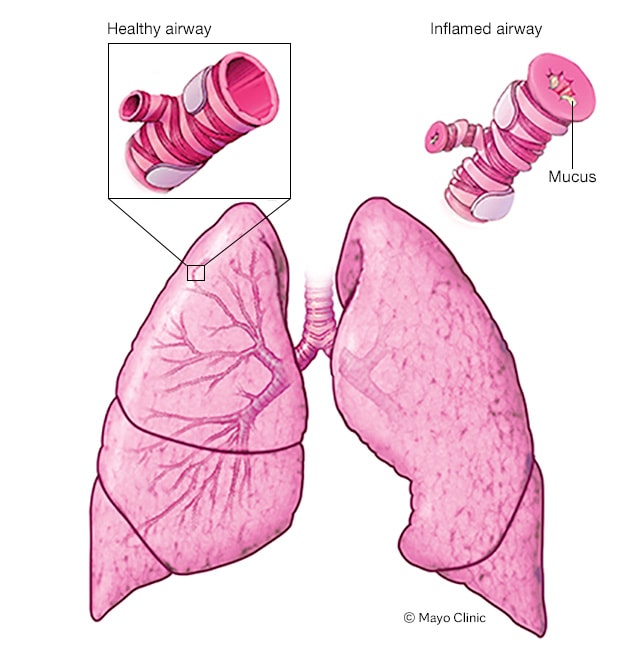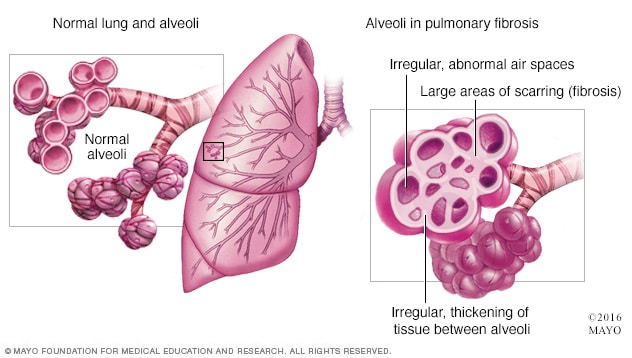Differential Diagnosis #1: Asthma
- Exacerbations present as chest constriction, dyspnea, nonproductive cough, expiratory wheezing, tachycardia, and tachypnea
- Considered a familial disorder, linked to over 100 genes that increase an individual’s susceptibility and response to treatment
- Rationale: complaints of shortness of breath, positive family history of a brother with asthma
- Mr. D.J.’s description of productive, copious cough, worsening shortness of breath during the winter months, and history of cigarette smoking do not align with common manifestations or risk factors for asthma, which helps to rule this out as a different diagnosis (McCance & Huether, 2019).

Imagine retrieved from mayoclinic.org
Differential Diagnosis #2: Pulmonary Fibrosis
- Presents with chronic cough, dyspnea on exertion, and chest tightness
- Can be idiopathic or due to scarring of the lung after an acute lung infection or disease
- Can also be due to an autoimmune disorder, or occur after exposure to certain toxic gases like sulfur, chlorine, ammonia, and hydrogen chloride
- Rationale: Based on history of inhalation of toxic gases associated with his occupation, symptoms of cough, and dyspnea on exertion, Mr. D.J. should be worked up for this disease with further health history and imaging
- Although Mr. D.J. has symptoms similar to PF, it can be excluded because his cough is productive (McCance & Huether, 2019)

Imagine retrieved from mayoclinic.org
Differential Diagnosis #3: Lung Cancer
- Presents as cough, dyspnea, weight loss, hemoptysis, malaise, chest pain, and symptoms that do not resolve with time
- Risk factors: cigarette smoking, second-hand smoke, radon, asbestos, chemicals, radiation, genetics, and diet
- Rationale: Based on the patient’s extensive cigarette smoking history, second-hand smoke and occupational chemical exposure, cough and dyspnea, Mr. D.J. could be at risk for lung cancer and should have further diagnostic testing performed
- Considering the patient does not exhibit symptoms such as weight loss, hemoptysis, malaise, or chest pain, lung cancer would not be a likely diagnosis and the patient should be seen in the lung cancer screening clinic for further assessment (McCance & Huether, 2019).
